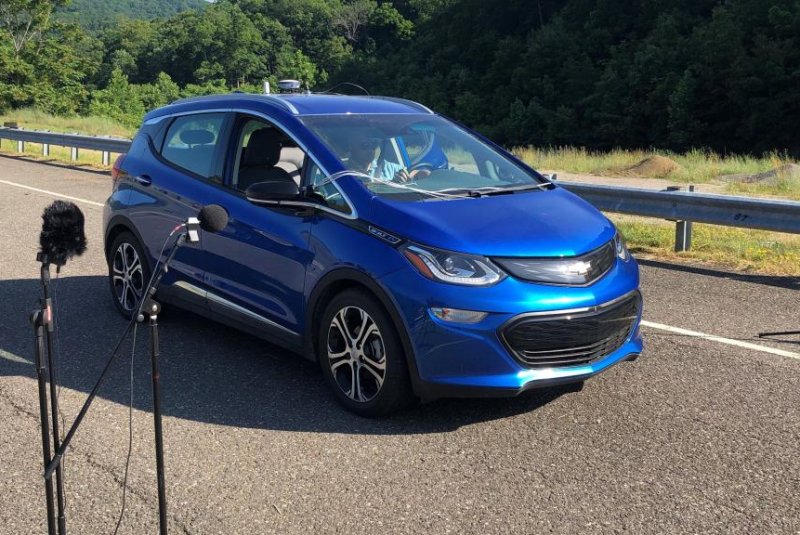A new study evaluates the sound emitted by electric vehicles so that pedestrians can hear them coming. Photo courtesy of Michael Roan and Luke Neurauter/Virginia Tech
Nov. 30 (UPI) -- Electric vehicles are quiet enough to create a safety concern, particularly for visually impaired pedestrians, even with artificial sounds implemented, a study presented Tuesday during the Acoustical Society of America meeting in Seattle found.
In the analysis, in which participants were asked to push a button upon hearing an approaching electric vehicle on an adjacent roadway, none of the tested vehicles achieved a 100% detection rate, the data showed.
However, artificial sounds added to the vehicles improved detection ranges -- or the distance at which they could be heard -- and all of those tested exceeded current National Highway Transportation Safety Administration minimum standards, the researchers said.
"While the additive sounds greatly improve detection distances over the no sound condition, there are cases where pedestrians still missed detections," study co-author Michael Roan said in a press release.
"However, there were cases where probability of detection, even at close ranges, never reached 100%," said Roan, an associate professor of mechanical engineering Virginia Tech University.
Even after adding sound, electric vehicles are typically quieter than standard internal combustion engine vehicles, research suggests.
As electric vehicles become more common on roadways, there have been numerous reports of injuries to visually impaired persons, who rely on sound to detect oncoming cars.
To address this issue, many countries have enacted laws requiring manufacturers to add artificial sounds to their vehicles to provide an additional means of detection, according to Roan and his colleagues.
In the United States, for example, regulations require vehicle sounds to be detectable at certain distances for various vehicle speeds, with faster speeds corresponding to larger detection distances.
For this study, Roan and his colleagues at the Virginia Tech Transportation Institute tested how well people detect electric vehicle sounds.
Study participants were seated adjacent to a lane of the Virginia Tech Transportation Institute's Smart Road facility and asked pressed a button upon hearing an approaching electric vehicle.
This enabled the researchers to measure the probability of detection versus distance from the vehicle, they said.
The researchers said additional studies are needed to investigate detection when all vehicles at an intersection are electric.
But, they added, additive sounds could create a complex interference pattern that may result in some loud locations and other locations with very little sound.















